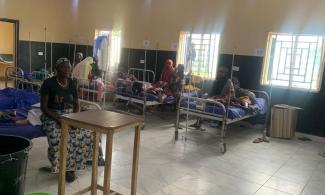
By: Abdulwasiu Olokooba
When electric poles were first erected in Ajiyawa community four years ago, residents thought their years of blackouts were about to end.
Night raids are what bandits use as cover to attack the community, and the local clinic was nearly out of service due to a power cut, so the possibility of having electricity supply was to be a lifeline to the terror-hit community.
But that was not to be. While some poles still stood there, they never generated electricity for homes. Residents called it “mere decoration”.
Ajiyawa, an agrarian community in Shinkafi local government area of Zamfara State, has been without electricity for over 50 years, Bawa Ajiyawa, a 50-year-old farmer who was born and raised there, said.
The father of nine with his two wives is among the millions of people not connected to the national grid in Zamfara and nationwide.
As an alternative, most residents rely on petrol-powered generators, which is a luxury for many in a community that relies on selling food crops to survive.
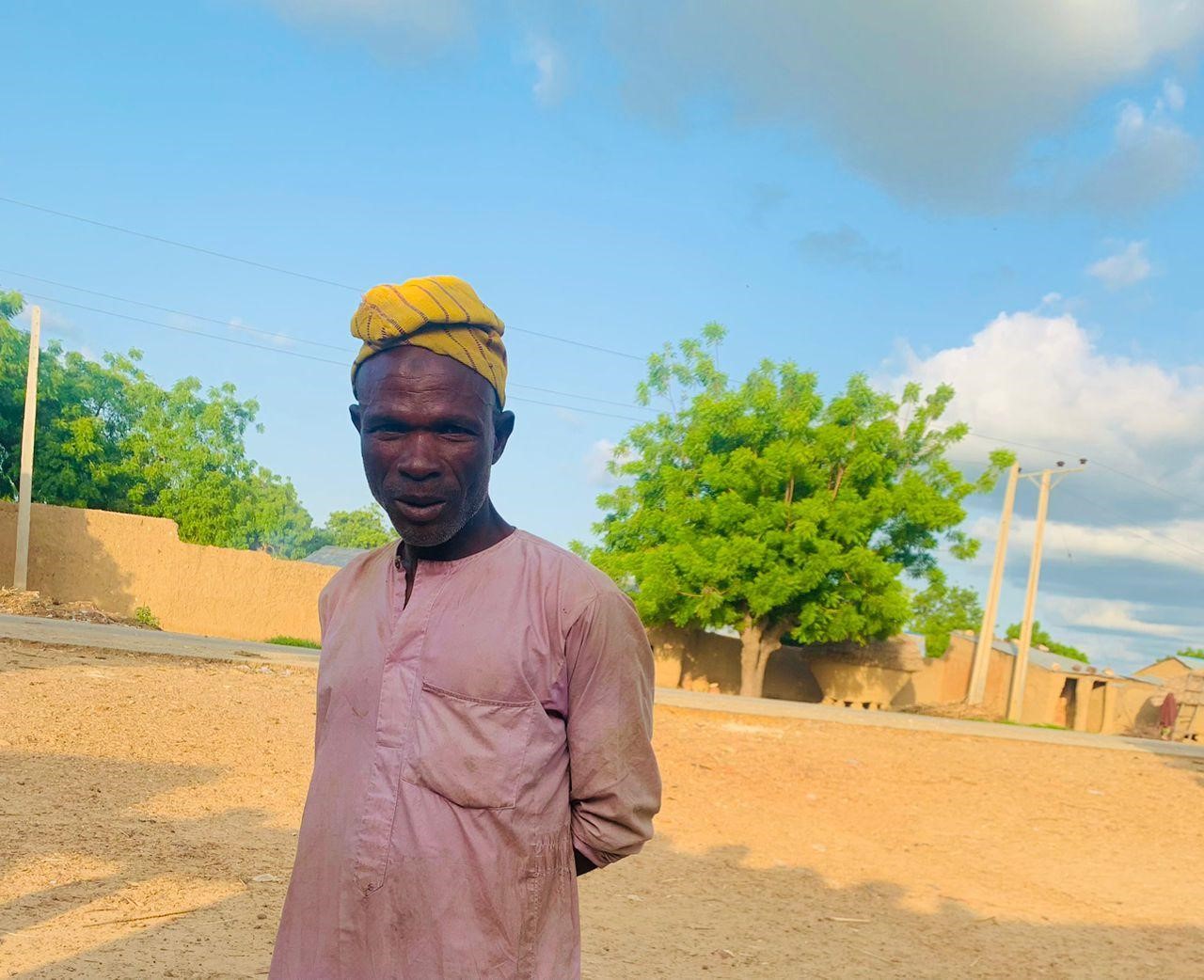
“The absence of electricity in Ajiyawa can be described as the major bane to our socio-economic growth. It’s like we have been disconnected from the rest of the world,” Bawa added.
Armed gangs are using that disconnect to pillage and kidnap people from the community, another resident, Wadata Adamu, said.
“I can't even tell you the exact number (of attacks) on this community because they attack us anytime they wish,” he said, adding that the latest attack was in August.
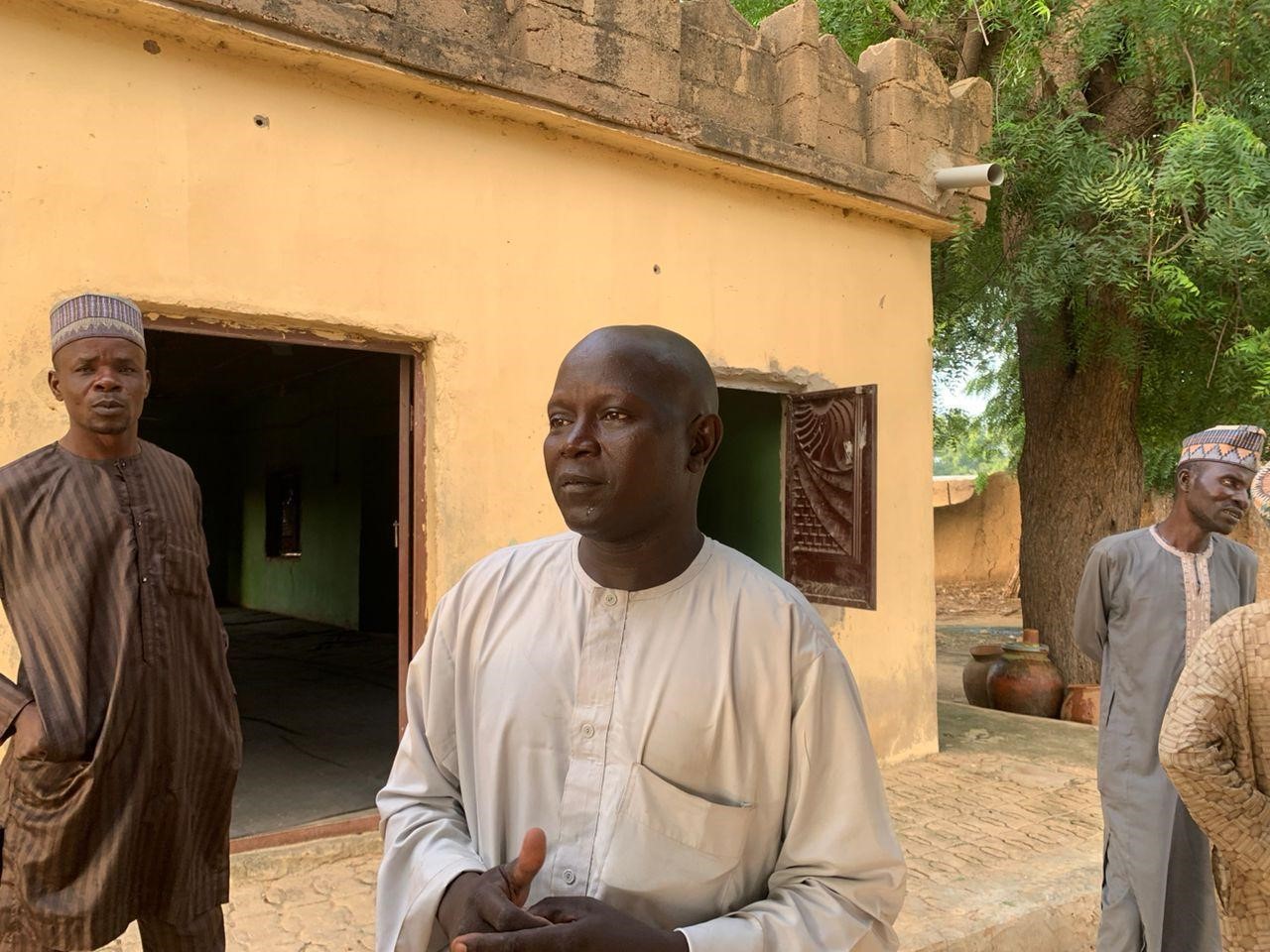
“They attacked us in the early morning while we were performing morning prayer,” killed one person and kidnapped many others.
“You can see the holes of bullets on the wall of the mosque,” Wadata, a trader and father of six, said, pointing at the wreckage.
“If There Is Light, We Will Feel Safer”
The residents of Ajiyawa said such attacks would be significantly reduced if they had electricity, especially at night.
“Of course, if there is light here, we can see whoever is coming into this town from far away,” Hassan Ajiyawa, another resident of the community, said.
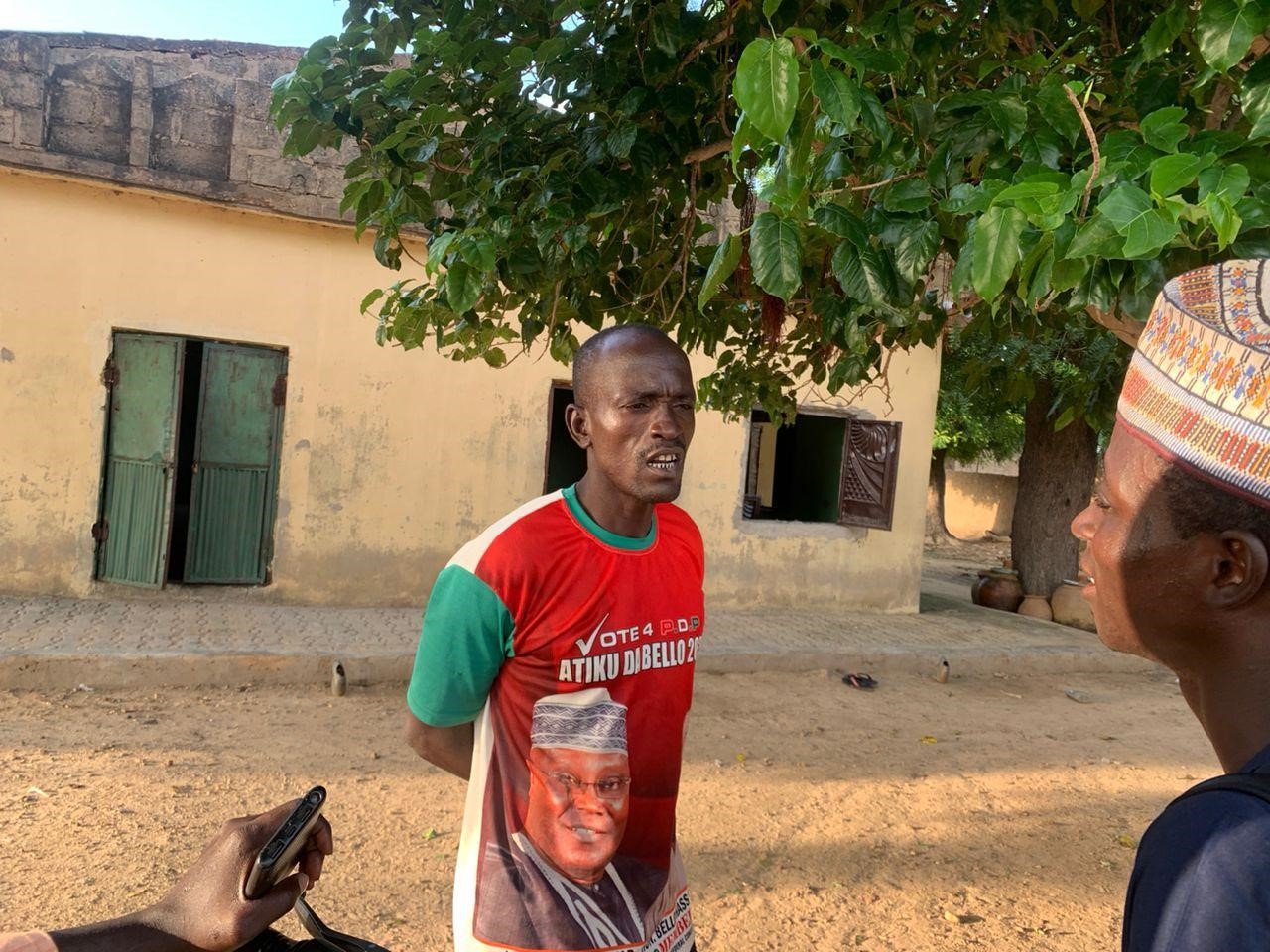
“They (terrorists) have been attacking us during dark hours because they hate light. If we had electricity, even if they would come, it would not be as frequent as we are witnessing now.”
Aremu Sodiq, a criminologist and private detective, agrees. He added that electricity would also create jobs, reducing the chances of youths taking to arms.

“In the context of northern Nigeria, where terrorism has been a concern, the relationship between electricity access and vulnerability to terrorist attacks is complex. It’s true that communities with electricity tend to have more government infrastructure and services, which can contribute to improved security and governance.”
Aremu noted that a variety of social, cultural and political factors influence the vulnerability of communities like Ajiyawa to terrorism.
“It's also important to note that electricity access alone cannot eliminate the threat of terrorism. Effective counterterrorism efforts require a comprehensive approach, including intelligence, law enforcement, community engagement, and addressing the root causes of extremism.”
In Darkness for 29 Months: Headache to Small-Scale Business
It was during the holy month of Ramadan,
After a heavy rainstorm in April 2021, the electric poles transmitting power to Shinkafi local government area of Zamfara State fell. Since then, the community has remained in darkness.
Nura Dauda, a welder in Shinkafi town, almost saw his business collapse as he had to spend a substantial part of his income on fuel to power his machines, which was killing his business.
Dauda said that he spent N5,500 daily on fuel, but it took more work for him to charge his customers higher prices to compensate for his expenses.
“Due to the increased cost of fuel as compared to using NEPA (electricity) before, there was a time I was contemplating leaving this business for something else. Many times, it would be hard to even remove your capital from your total income.”
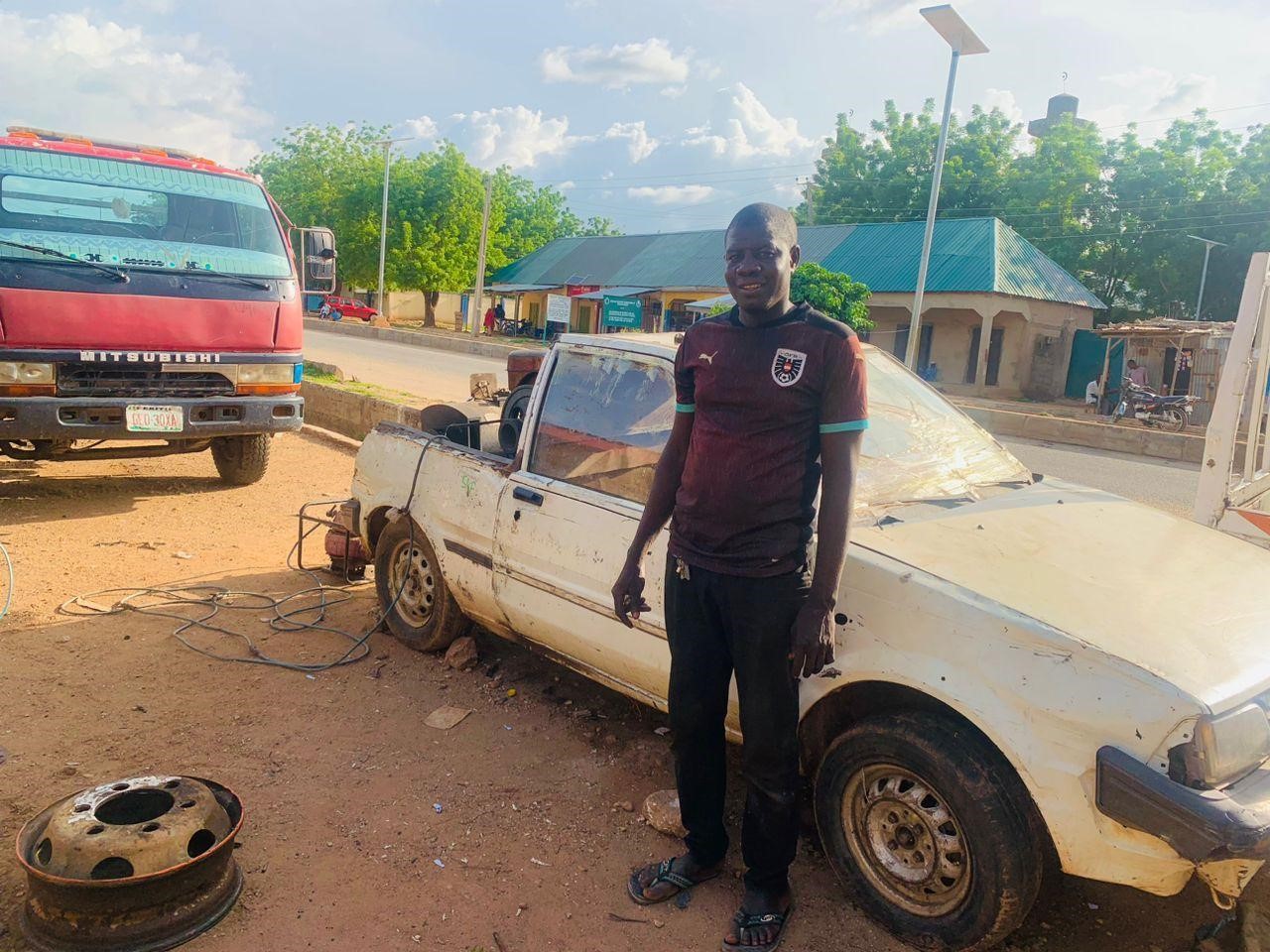
Dauda’s ordeal worsened after President Bola Tinubu announced the removal of fuel subsidies during his inauguration speech in May. As a result, the pump price of petrol tripled, leaving millions of fuel consumers, including Dauda, with dwindled income.
“The work I used to do for N500 before, I started charging my customers N1,200, and this resulted in low patronage,” Dauda said.
“In this workshop, I used to make up to N100,000 on average every month before our light got disconnected. This was because, at that time, our light was stable and barely used fuel. So the money I spent on fuel was not much. I might even use three days without buying fuel.
“But now that we don’t have light, what I realised as profit is not even up to N50,000 despite the fact that I even increased my charges. The money is spent on fuel and gas because there is no light,” he added.
Shinkafi, with a land mass of 921.5 km², is home to a population of around 241,900 people. This situation has affected the economy of the communities in the local government area.
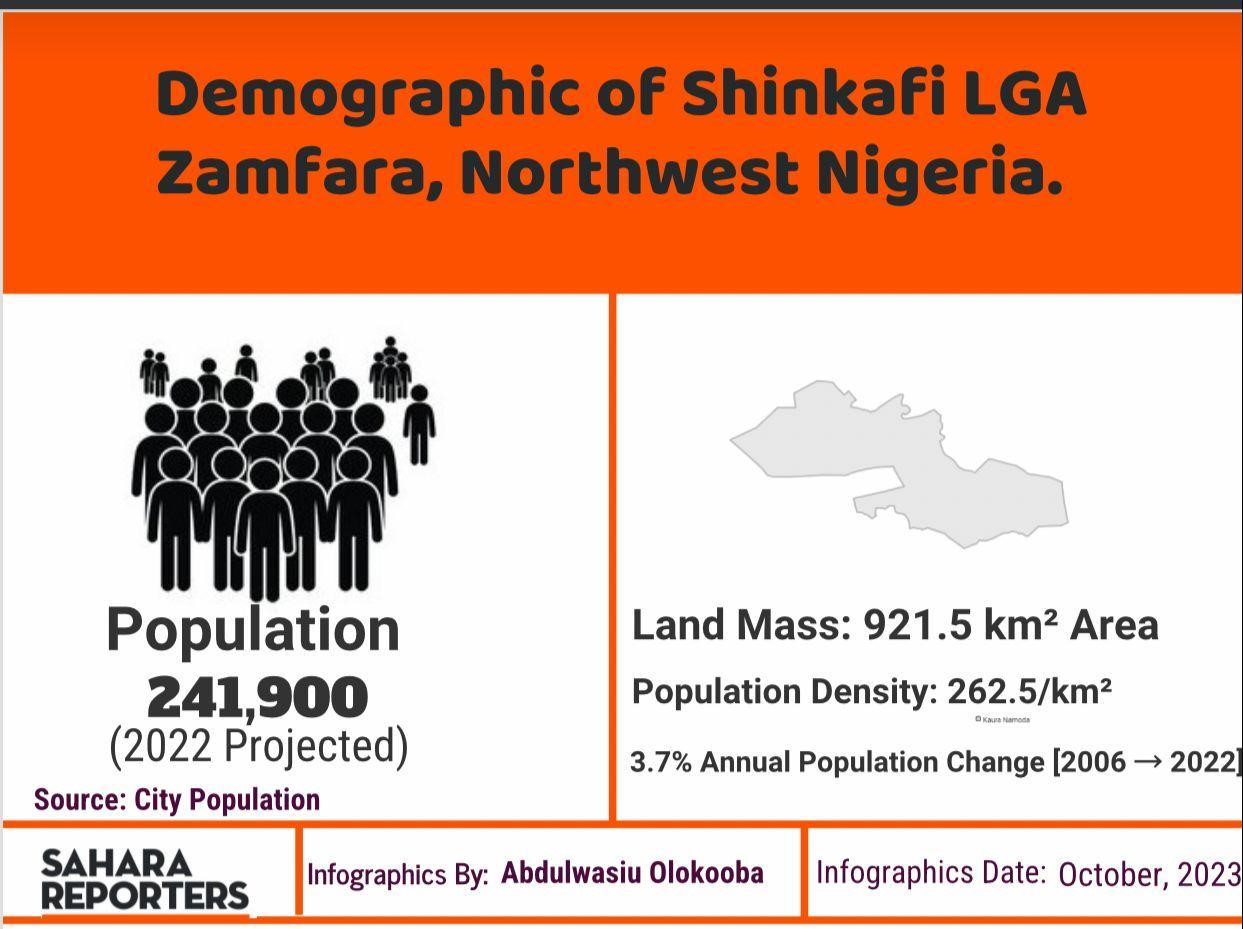
Dauda is not alone. Musa Umar, a resident of Ajiyawa community, owned a phone charging station. The increasing number of phone users in the community clearly indicated the pressing need for such a service.
As there was no power, Musa's shop became a lifeline for the residents. He started his business five years ago, and since then, it has played a significant role in keeping people connected to the world despite power outages. That, too, is changing.
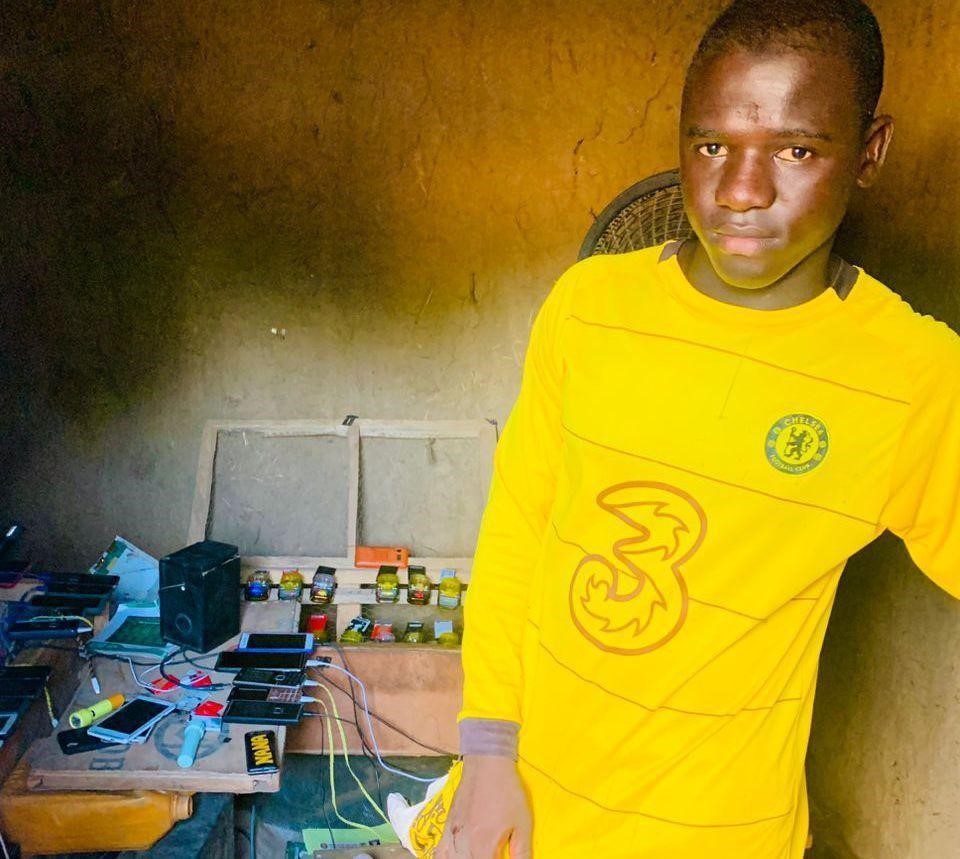
“I'm now buying fuel at the cost of N625, but before the removal of subsidy, I used to buy one litre of petrol at N180. I used my generator from 2 pm to 10 pm. I can finish almost five litres per day, which means spending N4000 daily on petrol,” he said.
Previously, Musa charged N30 per mobile phone, but after government cut subsidy, he began charged N70.
“Despite the fact that l increased the charge, I'm not getting any tangible profit, unlike before when l could make like N3,000 to N4,000 daily. Now, due to the hike in fuel price, l hardly see what l spent on petrol at the end of each day,” Musa said.
Threat To Primary Healthcare Delivery
The absence of electricity in Shinkafi local government also significantly impacts residents' healthcare delivery. The healthcare facilities in the area, including hospitals and primary healthcare centres, have been forced to rely on generators, which can be expensive and unreliable.
A staffer in a community clinic said that the only sources of light for them are torchlights and a small solar panel, which cannot be used for long before going off.
“We close by 9-10 pm when the solar battery is low because we can't work on patients without light,” Lauwali Aliyu, one of the clinic staff, said.
“At night, you can't see who is coming and who is going without electricity, and you know we have the problem of insecurity here. If there is light, fans and other needed facilities, we will be able to work diligently, and the patients will be treated nicely,” he added.
A visit to a primary healthcare centre in Birnin Yaro, another community in Shinkafi, showed that patients requiring urgent medical attention were often referred to the General Hospital in Shinkafi town, about a 30-minute drive away. This always puts patients at risk of worsening conditions during transportation.
Unlike the clinic in Ajiyawa, the one in Birnin Yaro was once connected to electricity until the local government was disconnected in April 2021.
Since then, the facility has relied on a solar panel to generate electricity for routine immunisation. However, when this reporter visited in September, he was told the solar panel had been damaged about two weeks earlier, leaving the facility without any means to source power.
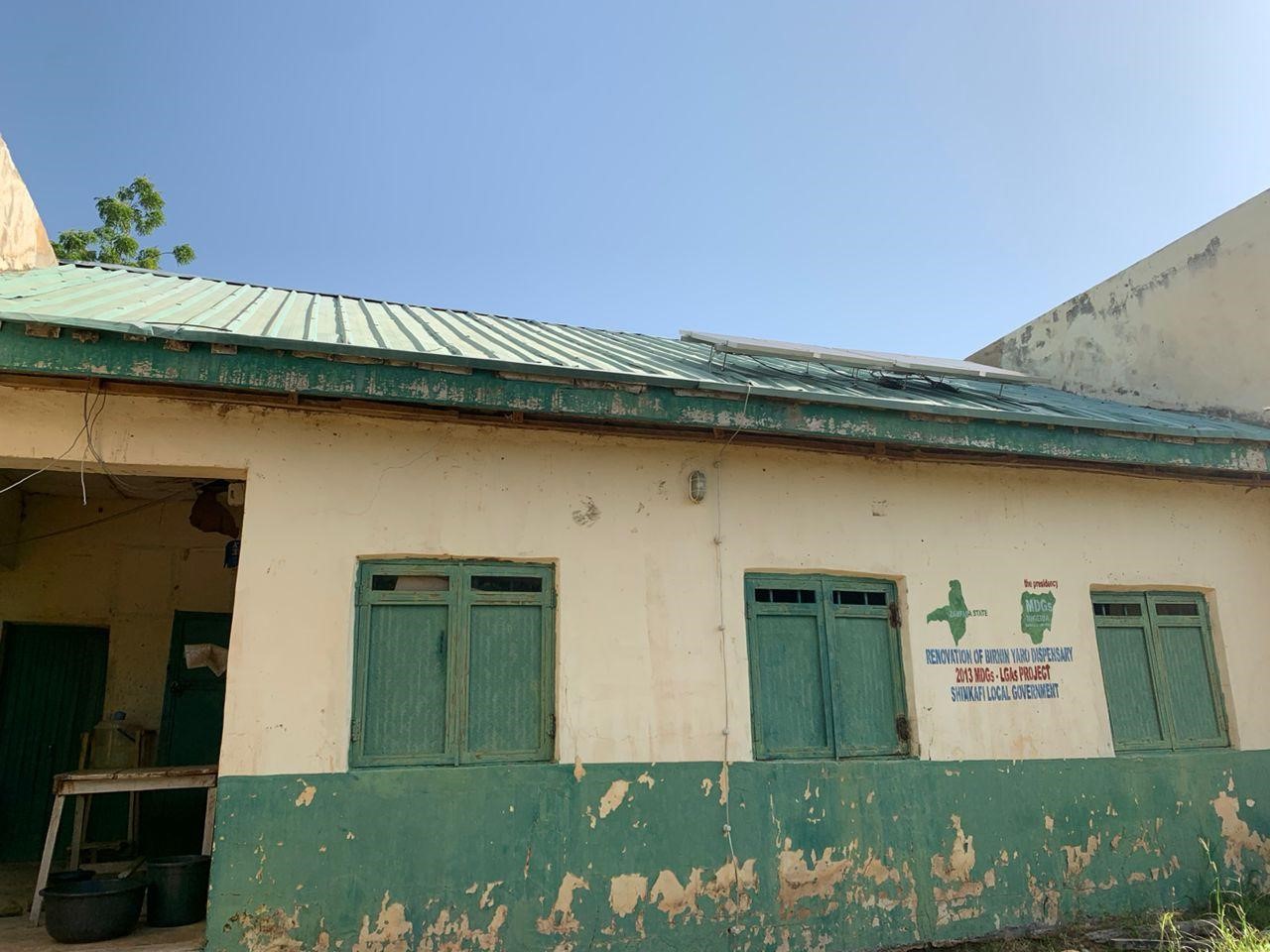
“I think if there is light here, it will improve our work. Even at night, we can work, but now, due to lack of light, we are closing up by 4 pm,” Suleman Dahiru, a staffer of the healthcare facility, said.
Suleman said it's standard practice for healthcare facilities to refer patients to the General Hospital and that the lack of electricity exacerbated the situation. He said even malaria and wounds that they routinely treated before are now referred to the General Hospital.
That was the case of Asmau. She recalled the day she brought her first son, who needed urgent medical attention, to the hospital around 5 pm, only to find out that the hospital had closed.
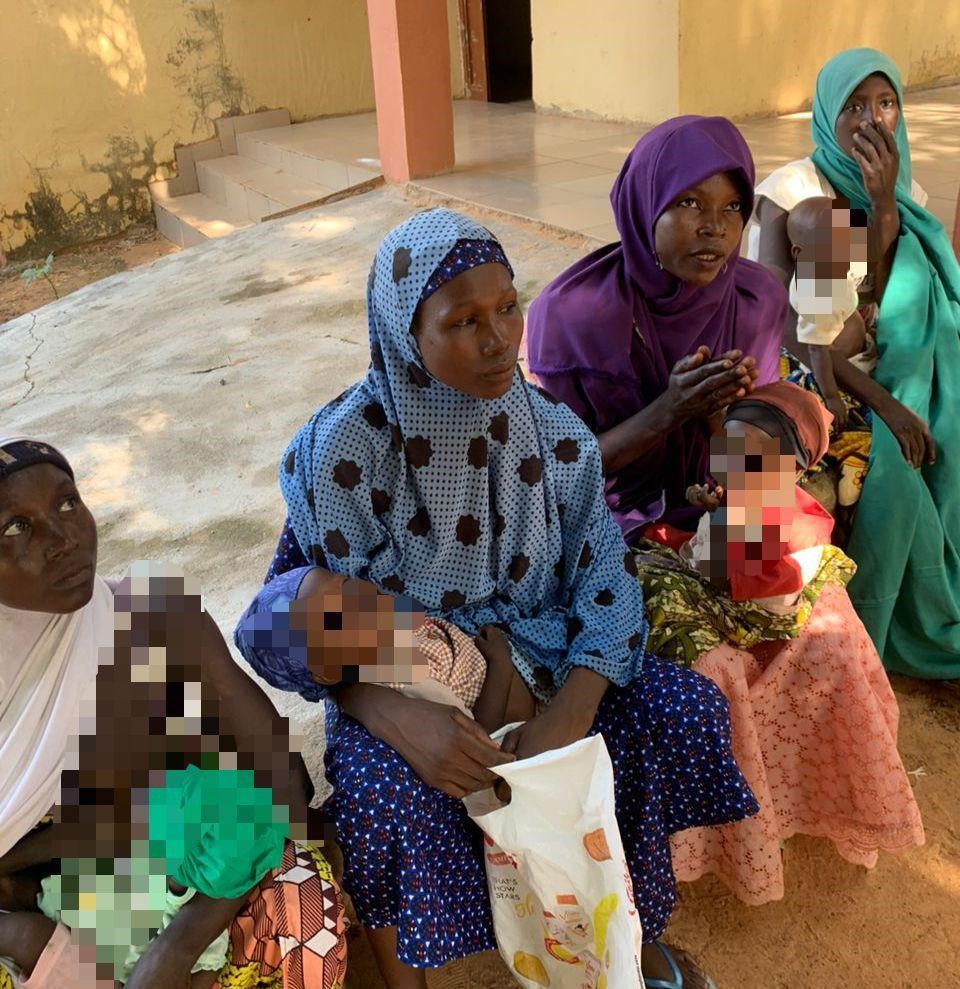
“It’s by Allah’s (God's) grace that made my son survive that day because it was very tough for him before we could reach General Hospital in Shinkafi where he was admitted for about a week,” Asmau said.
“If this hospital were working till night, I would not have experienced what I went through that day. For us, we prefer this hospital to the general hospital because it is close and very accessible, and the staff are also, unlike what we witnessed at the general hospital where you don’t know anybody.”
This situation in Shanawa community was similar. When this reporter arrived at the community's Primary Healthcare facility at 5 pm, the facility was already closed for the day. A resident who identified herself simply as Zainab said the facility closes around 4 pm.
This reporter observed that a solar panel was affixed to the roof of the health centre, indicating that it also relies on solar to generate power for its daily activities.
Another community resident, Yusuf Shanawa, noted that the community had stopped having power when Shinkafi was disconnected 29 months ago.
Efforts to reach Mr Salisu Shanawa, a staff member in charge of the healthcare facility, for comments were unsuccessful.
The situation in Shinkafi Local Government Area could be one of the many reasons Zamfara was ranked as the most difficult state in Nigeria to access primary healthcare services in 2022.
Inside Shinkafi General Hospital Where Three Patients Shared One Bed
With the other health facilities in Shinkafi local government area unable to work optimally due to power outages, the General Hospital in Zamfara state has become the alternative.
But the hospital is being overwhelmed. At least three patients share a bed in the cramped wards.
Although the General Hospital has also been disconnected from the national grid since April 2021, the hospital is regularly powered by a generating set donated and fueled ever since by Medicine Saint Frontiers (MSF), an international humanitarian organisation.
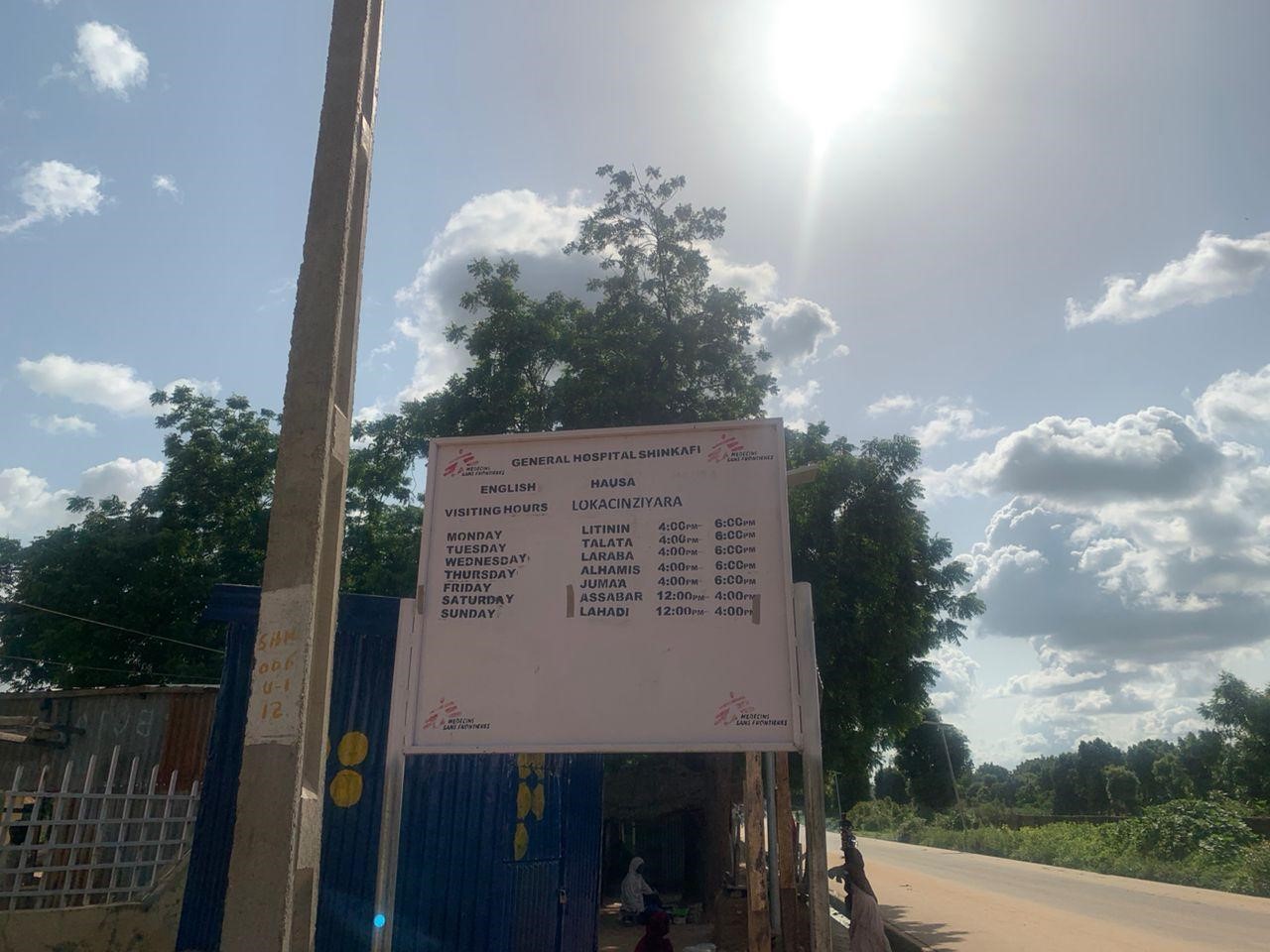
When this reporter visited in September, it was brimming with patients, each seemingly more ill than the other.
Aminu Alhazzai, a hospital medical director, said that many people use the facility because the primary healthcare facilities in neighbouring communities were not functioning properly.
“The population is actually more overwhelmed than the capacity of this hospital. Now, if you go to the emergency ward, you will see a lot of women and their children. Some of them did not even have a bed, and those who were fortunate to have beds had to share with others,” Aminu said.
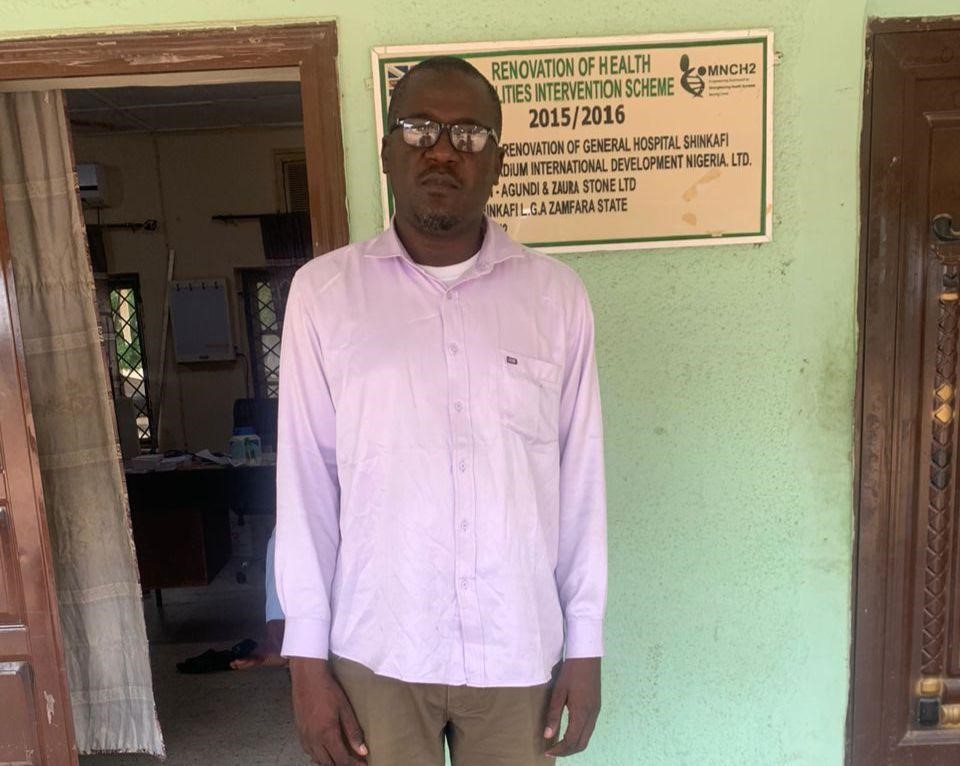
“The truth is we are in a season of malaria, and the number of patients used to increase during this period, but if the PHCs function as they should, this hospital will be relieved. But that will be a miracle because most of them lack electricity.
Aishat Usmanu, a resident of Ajiyawa and mother of one of the patients, said she travelled several kilometres to the hospital because of her experience at her community clinic. She said that she would come to the General Hospital regardless of the circumstances, even if it were for malaria.
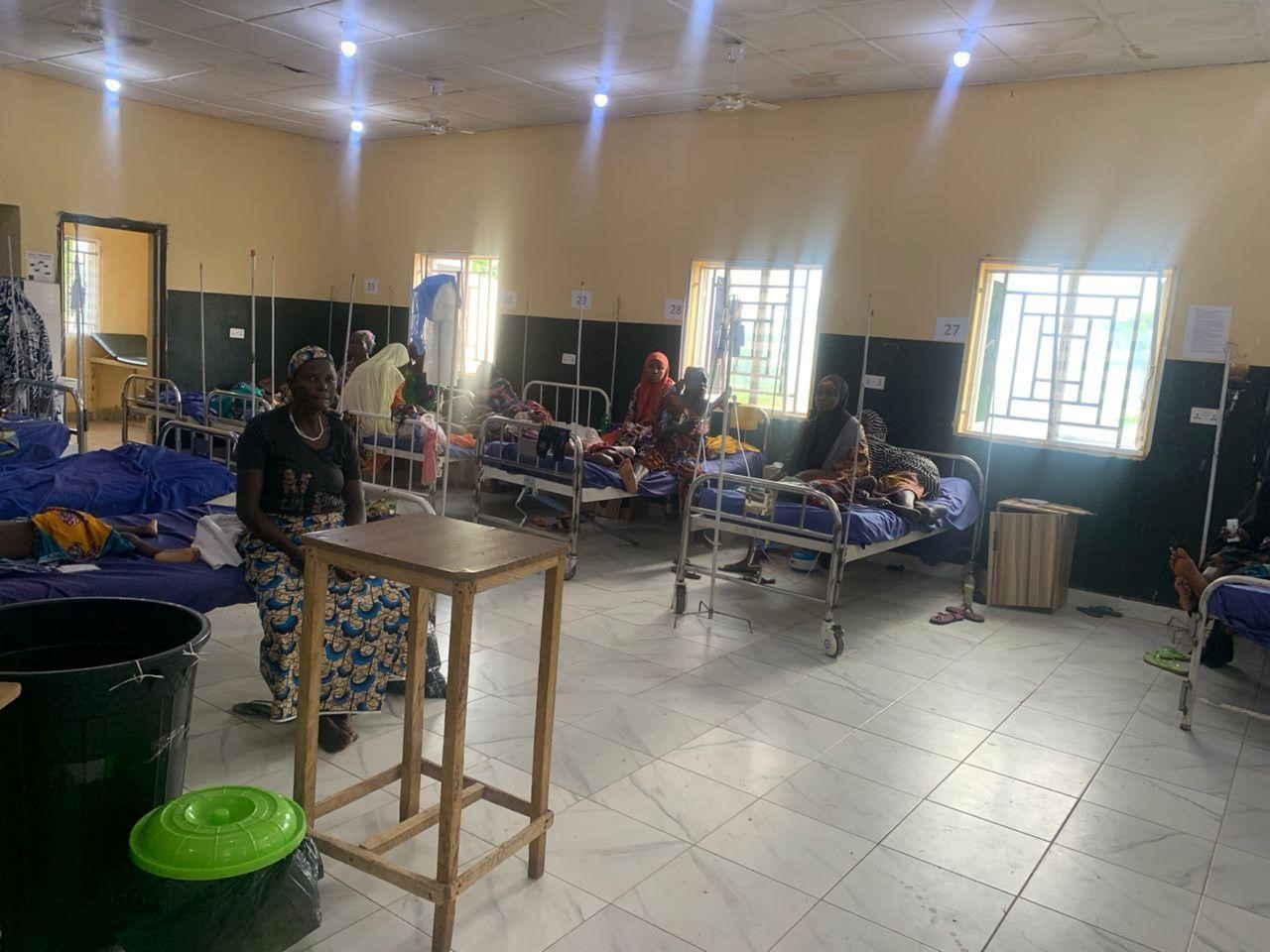
“A lot of people keep coming to this hospital because those small clinics close early. They would tell you to leave when it is time for them to close if you are still sick, and if you ask them why they are closing early, they would tell you there's no light, and it is unsafe to stay till night,” Aisha said.
Over N20 Million Loss By Distribution Company
Data obtained from Kaduna Electricity Distribution Company(KAEDCO), an electricity distribution company in which Zamfara is one of its franchise states, shows that the company has lost about N20.3 million since April 2021 when Shinkafi local government area was disconnected from the national grid.
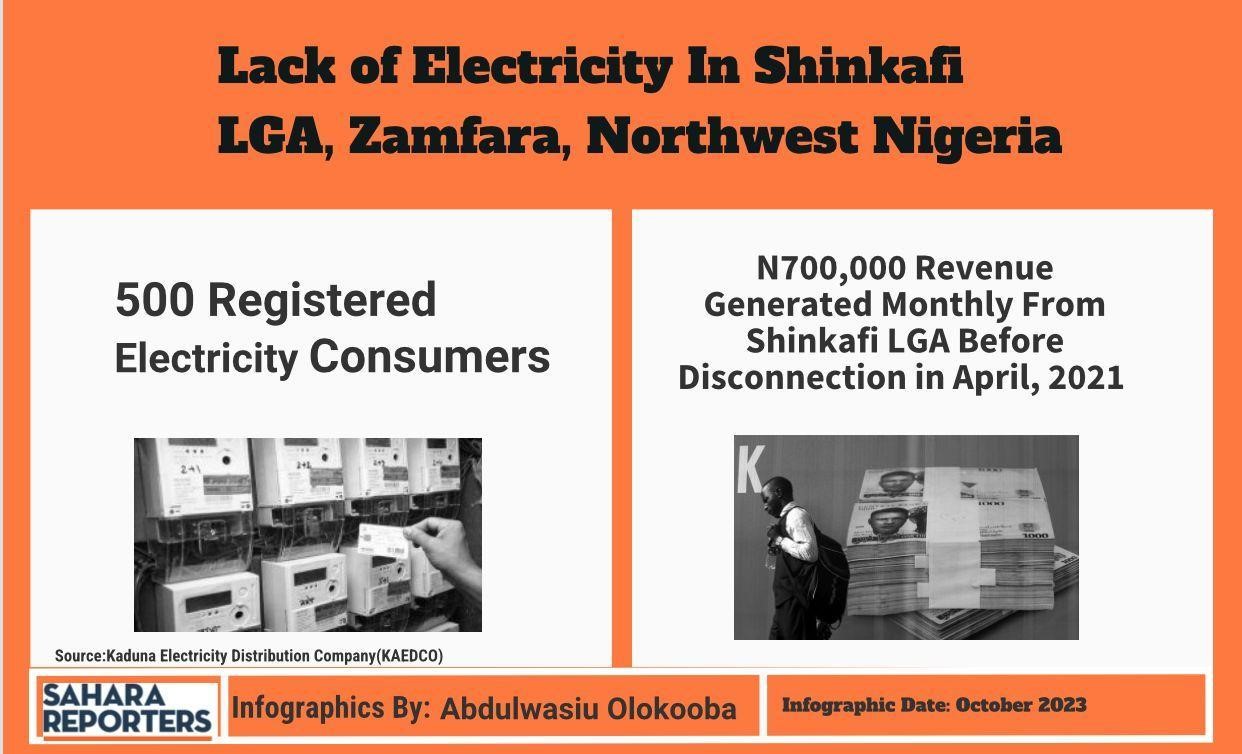
Before the disconnection, the company used to generate N700,000 monthly from about 500 registered customers from Shinkafi local government area, according to Mohammad Abba, the Zamfara Branch corporate communication officer of the company.
“Since the time of disconnection, the company has not received any revenue from the local government area,” Abba said.
This is amid the struggle of the company to pay off its huge debt to The Nigerian Electricity Regulatory Commission (NERC). In May, NERC threatened to revoke KAEDCO's licence over N51.93 billion debt.
Company Says Insecurity, Low Revenue Delay Reconnection
When asked what is preventing the company from reconnecting the Shinkafi local government area to the national grid, Mohammad Abba answered that the area is too volatile for their team to operate due to the security situation.
“The insecurity in that area is the first reason delaying reconnection. It would be difficult for our staff to work if we realise their safety is at stake,” Abba said.
Abba added that the revenue the company was generating from the area was not commensurate with the amount of energy consumed by the people before the disconnection.
“We expect to generate N2.7 million monthly, but we always generate N700,000, which is a shortage of N2 million every month before the light was disconnected.”
“This low revenue is another vital reason we have not connected them,” Abba added.
Government Reacts
When contacted, the Acting Chairman of the Shinkafi Local Government Area, Attairu Abdullahi, admitted that insecurity was one of the reasons the entire local government remained in darkness for 29 months.
Mr Abdullahi said both the local and state governments are working collectively to ensure the electricity is reconnected very soon.
When asked about communities like Ajiyawa that have never been connected to the national grid and what steps the government has taken to address this, he stated that the process to connect Ajiyawa to the national grid was started by the immediate past Governor Bello Mutawalle but could not be completed during that time due to a lack of funds.
The Mr Abdullahi, also mentioned that unnecessary “formalities” adopted by KADECO towards reconnection also slowed the process.
“This report was facilitated by the Wole Soyinka Centre for Investigative Journalism
(WSCIJ) under its Collaborative Media Engagement for Development, Inclusivity and
Accountability (CMEDIA) project.”